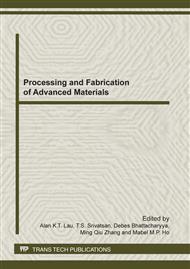p.353
p.357
p.361
p.366
p.370
p.377
p.382
p.386
p.390
A Comparative Study on Conventional Electrospinning and Emulsion Electrospinning of PLLA Nanofibers
Abstract:
Electrospinning is investigated by many groups around the world for constructing fibrous tissue engineering scaffolds. Incorporating biomolecules such as growth factors in fibers is becoming common for enhancing the biological performance of electrospun scaffolds. However, biomolecules may lose bioactivity if they are exposed to organic solvent during electrospinning. In emulsion electrospinning, an aqueous biomolecule solution is emulsified and water-in-oil emulsions are then electrospun into core-shell structured fibers, with biomolecules being contained in the core of fibers, which helps to avoid biomolecule-solvent contact and also reduce the initial burst release. In this investigation, for a comparative study, poly (L-lactic acid) was made into solid and core-shell structured fibers via conventional electrospinning and emulsion electrospinning, respectively. The two electrospinning techniques and resultant fibers were compared in terms of processing parameters (polymer concentration, applied voltage, working distance, etc.) and fiber characteristics (morphology, diameter, structure, etc.). Solvent properties such as conductivity and volatility affected fiber morphology and diameter. The polymer concentration range usable for emulsion electrospinning was narrower than that for conventional electrospinning owing to changes in viscosity.
Info:
Periodical:
Pages:
390-393
Citation:
Online since:
November 2011
Authors:
Price:
Сopyright:
© 2012 Trans Tech Publications Ltd. All Rights Reserved
Share:
Citation:


